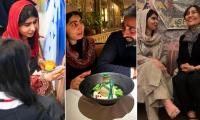Islamabad : Smog—a toxic cocktail of fog and pollutants—has become a recurring environmental and public health crisis in Pakistan. Cities like Lahore, Faisalabad, and Gujranwala frequently make headlines for their hazardous air quality, particularly during winter. This issue not only jeopardizes human health but also contributes to environmental degradation, impeding economic growth and exacerbating climate challenges. To address this crisis, innovative solutions such as Integrated Resource Recovery Centres (IRRCs) and sustainable crop residue management offer promising avenues.
Smog primarily arises from emissions of particulate matter (PM2.5 and PM10), nitrogen oxides (NOx), sulfur dioxide (SO2), and volatile organic compounds (VOCs). These pollutants emanate from a mix of industrial emissions, vehicular exhaust, and the infamous practice of crop residue burning. According to the World Air Quality Report 2023, Lahore ranked among the most polluted cities globally, with its AQI frequently soaring above hazardous levels. The health impacts of smog are alarming: respiratory diseases, cardiovascular issues, and a heightened risk of lung cancer are just the tip of the iceberg. The economic toll is also substantial, with losses estimated at billions of dollars annually due to decreased agricultural yields, healthcare costs, and reduced labour productivity.
A significant contributor to smog in Pakistan is the burning of crop residue, particularly in Punjab. After the harvest of crops like wheat and rice, farmers often burn leftover stubble due to the lack of affordable and accessible alternatives for disposal. This practice releases copious amounts of carbon dioxide, methane, and black carbon into the atmosphere, contributing not only to smog but also to global warming. Integrated Resource Recovery Centres (IRRCs) can play a pivotal role in mitigating smog by transforming waste, including crop residue, into valuable resources. These centers operate on the principles of circular economy, focusing on waste reduction, recycling, and resource recovery.
In the context of crop residue, IRRCs can convert agricultural waste into: Compost: Organic fertilizers that enrich soil health and reduce the reliance on chemical fertilizers. Bioenergy: Biomass briquettes or pellets, which serve as eco-friendly fuel alternatives for industrial use.
Raw Materials: Pulp for paper or biodegradable packaging materials, reducing the environmental footprint. This approach not only eliminates the need for burning crop stubble but also generates economic benefits for farmers through the sale of compost or bio-energy. Furthermore, IRRCs provide employment opportunities, enhancing rural livelihoods while promoting sustainable practices.
For IRRCs and other sustainable practices to be successful, a multifaceted approach involving government, civil society, and private stakeholders is crucial: Subsidies and Incentives: The government must provide subsidies for the establishment of IRRCs and machinery like Happy Seeders, which can sow seeds without clearing the stubble.
Strict Enforcement of Laws: Penalties for crop residue burning should be strictly enforced while offering viable alternatives to farmers. Public Awareness Campaigns: Educating farmers and urban dwellers about the detrimental effects of smog and the benefits of sustainable waste management is essential. Private Sector Involvement: Collaboration with industries to adopt biomass-based fuels can create demand for processed crop residue.
Modern technologies such as satellite monitoring and IoT devices can help track crop burning and identify hotspots, enabling timely intervention. Additionally, air purifiers and urban green belts can mitigate the immediate impacts of smog in cities. Smog is not an inevitable curse but a challenge that can be addressed through sustainable practices and collective action. By integrating resource recovery into the agricultural and urban waste management framework, Pakistan can turn a crisis into an opportunity. Solutions like IRRCs offer a pathway to cleaner air, healthier communities, and a more resilient environment. With the right policies, technological advancements, and public participation, Pakistan can tackle its smog problem and set an example for sustainable development in the region.— Sumaira Gul
Allama Iqbal Open University building can be seen in this picture. — Allama Iqbal Open University website/File...
An image from a comprehensive training workshop titled Tools & Techniques for Research organised at Centre for...
A representational image of a handicrafts exhibition.— Facebook@aajiz.jamali.9/File Islamabad:The extravagansa...
Participants seen taking a group photo at "Kashmir Jannat Nazeer" festival at the Islamabad Model College for Girls,...
A representational image showing people taking part in a plantation drive in Pakistan. — UNAP...
An image from an event at Islamabad model college for girls IMCG F7/.— Facebook@mofept/File Islamabad: A student...







